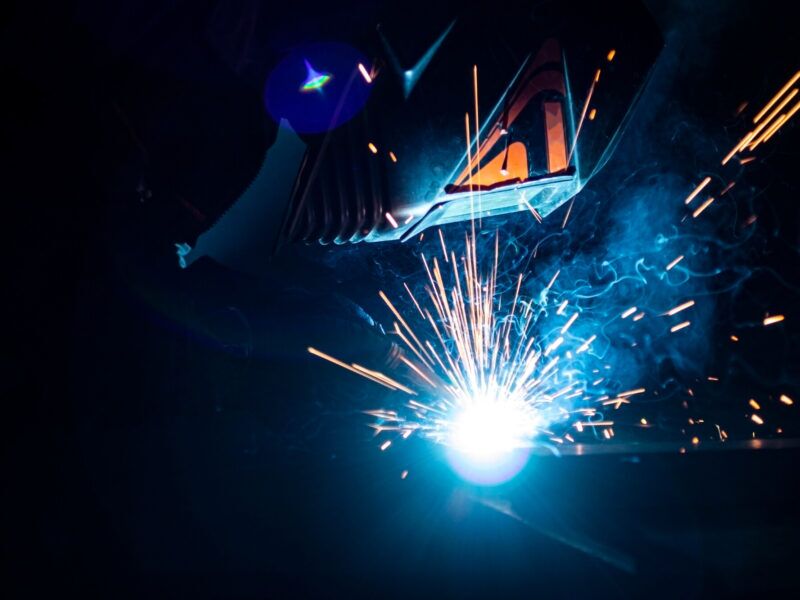Ultimate Overview to Preventing Weld Undercut: Tips and Techniques
Ultimate Overview to Preventing Weld Undercut: Tips and Techniques
Blog Article
Important Tips for Welders: Preventing Undercut Welding and Ensuring Stronger Weld Joints
In the realm of welding, achieving resilient and strong weld joints is the foundation of producing premium job. One usual difficulty that welders often encounter is undercut welding, which can compromise the honesty of the weld joint.

Understanding Undercut Welding
Undercut welding is an usual welding defect that takes place when the weld steel fails to correctly load the groove and results in a groove-like anxiety along the weld bead. This problem damages the weld joint, making it vulnerable to splitting and failing under stress. Undercutting can be triggered by numerous elements, consisting of too much welding current, high welding rate, inappropriate electrode angle, wrong electrode size, and bad welding technique.
Among the primary factors for undercut welding is a discrepancy in between the welding present and the welding speed. If the welding current is expensive or the welding rate is also quickly, the weld metal might not effectively fill up the groove, bring about undercutting. Furthermore, making use of an electrode that is also large can cause a comparable outcome, as the excess metal can not properly stream right into the groove.
To stop undercut welding, welders ought to guarantee they are making use of the right welding parameters, keep an appropriate electrode angle, select the ideal electrode dimension, and practice proper welding techniques. By resolving these variables, welders can lessen the danger of damaging and develop more powerful, a lot more trustworthy weld joints.
Proper Welding Strategy
Efficient welding method plays a crucial function in ensuring the quality and honesty of weld joints. One fundamental aspect of correct welding strategy is keeping the correct angle and distance in between the welding weapon and the workpiece.
Additionally, a stable and regular hand movement is crucial for producing strong and sturdy weld joints. Welders must go for smooth, consistent activities to make certain also circulation of the weld product. Appropriate adjustment of the welding weapon and filler material is likewise essential to achieving optimal infiltration and blend.
In addition, controlling the warmth input and choosing the proper welding specifications based upon the material being bonded are important aspects in accomplishing high-grade welds - Preventing weld undercut. Welders must comply with the advised setups provided by welding procedure specifications and readjust them as required based upon the certain demands of the project. By grasping correct welding methods, welders can significantly enhance the stamina and integrity of their weld joints
Choosing the Right Electrode
When thinking about the significance of choosing the best electrode in welding applications,Preserving the correct angle and distance between the welding weapon and the work surface is basic. The choice of electrode plays an important function in establishing the high quality and strength of the weld joint. Electrodes come in different kinds, each created for specific purposes and materials.
To start with, choosing the ideal electrode size is essential. Thinner electrodes are suitable for welding thin materials, while thicker electrodes are better for thicker materials and greater warmth applications. Matching the electrode size to the density of the workpiece helps achieve a balanced weld.
Second of all, understanding the product structure of the important link electrode is essential. Different electrodes are made for welding specific products like steel, stainless-steel, aluminum, or cast iron. Utilizing the appropriate electrode product guarantees excellent combination and decreases the threat of issues in the weld.
Lastly, considering the welding position and technique is important when choosing the electrode kind. For example, particular electrodes are much better fit for overhead or vertical welding positions, while others function well for flat or straight placements. Choosing the best electrode based on the welding method boosts the total weld quality and stability.
Preparing the Base Steel
To make sure a successful welding procedure, what preliminary actions should be taken when preparing the base metal for welding? Furthermore, any kind of existing weld material or deposit from previous welding should be gotten rid of to make certain a tidy surface area for the brand-new weld.

Carrying Out Post-Weld Assessments

After conducting these assessments, welders must contrast the outcomes versus sector requirements and project requirements to make certain that the weld joint fulfills all essential requirements. Any kind of inadequacies or deviations uncovered during the post-weld evaluation should be immediately dealt with via suitable corrective measures to assure the weld's honesty. By vigilantly performing post-weld examinations and without delay resolving any kind of problems, welders can maintain the top quality and integrity of their job, eventually adding to the safety and long life of the bonded structures.
Verdict

Finally, preventing undercut welding and making certain stronger weld joints need a combination of proper welding method, selecting the right electrode, preparing the base metal properly, and carrying out post-weld assessments. By comprehending the reasons for undercut welding and executing the required precautions, welders can create top quality weld joints that satisfy market standards and make certain the architectural honesty of the welded components.
Undercut welding is a typical welding issue that occurs when the weld steel fails to appropriately fill up the groove and results in a groove-like depression along the weld bead (Preventing weld undercut). Damaging can be triggered by different elements, including too helpful resources much welding current, high welding speed, inappropriate electrode angle, wrong electrode size, and bad welding method
One of the major reasons for undercut welding is an inequality in between the welding present and the welding rate. If the welding current is also high or the welding rate is as well quickly, the weld metal may not effectively fill up the groove, leading to undercutting.Maintaining the proper angle and range in between the welding weapon and the workpiece is essential when taking into consideration the importance of picking the appropriate electrode in welding applications.
Report this page